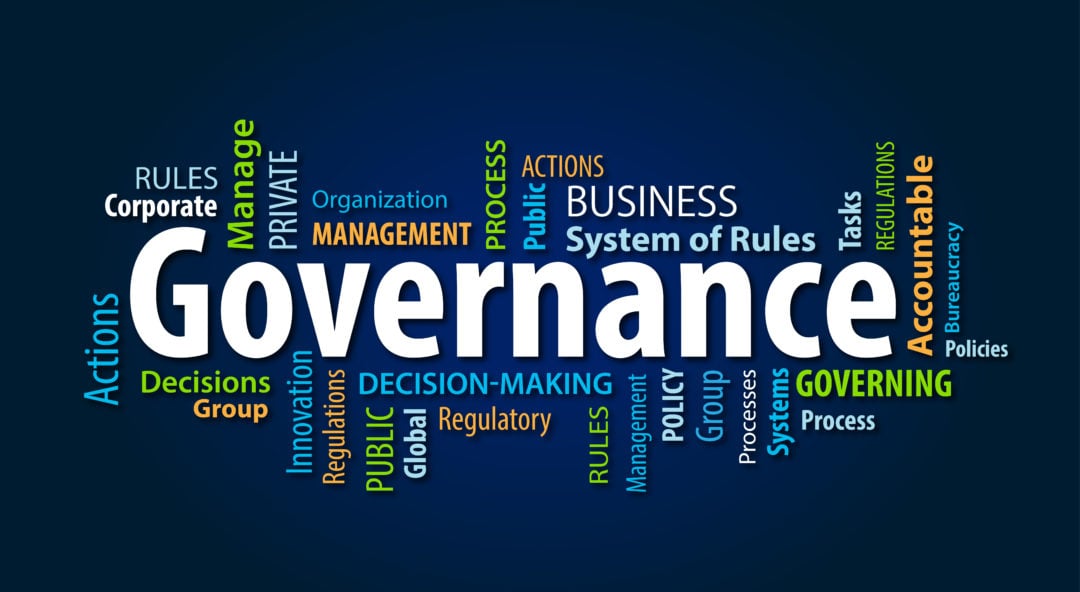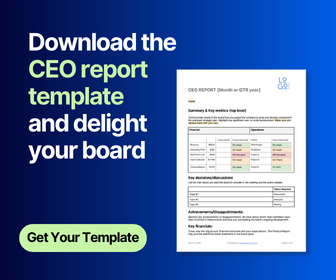The importance of CEO reports in an organisation
During one of our BoardPro webinars, an interesting topic was raised by one of our webinar attendees. “Spending a lot of time looking at a management report for the board is sometimes described as driving the car forward while looking in the rearview mirror. Why is it so important to look at management reports? And how much time should be balanced each month between looking at whats happened and strategic thinking?”
In this article, we will go deeper into this question and decipher the importance of CEO reports, what makes a good one, why they are so important and how to balance between looking at the past and future of an organisation’s strategy.
What is a CEO report?
Before exploring the content of an exceptional CEO report, it is important to take note of the difference between a CEO report and a management report.
Management reports are prepared on, often, a monthly or quarterly basis for internal stakeholders of the company to get aligned and measure progress against objectives. These business documents are used to inform members of a board of essential information, keeping internal stakeholders up to date on company activities. They are essential because they help capture key statistics that are needed in order for directors to make sound decisions and for management to run an effective business.  CEO reports are for the Board and are typically presented at the start of the Board meeting to set the tone for all Board members and the following few hours within a boardroom. According to Ruth Medd, the Chair of Women on Boards, “A great CEO report gets the Board up to speed and guides the directors to where the discussion should focus.”
CEO reports are for the Board and are typically presented at the start of the Board meeting to set the tone for all Board members and the following few hours within a boardroom. According to Ruth Medd, the Chair of Women on Boards, “A great CEO report gets the Board up to speed and guides the directors to where the discussion should focus.”
In other words, while the operations are important, Board members are there to keep their eye on the bigger picture, and so it’s important they don’t miss the forest for the trees.
While there are executive members of the Board who are deep into the weeds of the organisation’s developments, problems and more – non-executive members need this CEO report to get an overview of where the focus, attention, discussion and support needs to be directed.
How much time should be spent reviewing the past?
We often get asked by customers about how much time a Board should spend looking toward the future rather than reviewing the past. This goes for the contents that go into the CEO report, how it is delivered, as well as the structuring and discussions that take place during Board meetings. It is also applied when, for example, the attendee in our BoardPro webinar brought up that their Board members want to 'spend a heap of time reviewing management reports'.
So with that? How much time is enough time when it comes to looking at the past?
“My rule is that its a 50/50 for an organisation that has been around for a while and is ticking along nicely,” explains Medd “If you are a new company, a start-up, and you invented the better widget, then you might spend a lot more time on the forward-looking things than the backward-looking things. That’s traditionally how it happens.”
“I feel an obligation as a CEO to keep the Board up to date on how we’re progressing along, how we’ve executed on initiatives we’ve promised to do … by nature that is to a degree backward looking,” says Brett Herkt, the co-founder and CEO of BoardPro. “I want to always be leaning myself toward the forward looking view and painting the future forward and giving the confidence that I can achieve what I want to achieve going forward.” /Steven%20Bowman.jpg?width=180&name=Steven%20Bowman.jpg) “The Board is not there to meet; the Board is there to make the choices to create the future for the communities they serve,” explains Steven Bowman, Managing Director of Conscious Governance. “And if they’re going to make choices that create the future, they better have their eye on what the future might be or what it could be and not just there to monitor staff. That’s only a small part of what they do.
“The Board is not there to meet; the Board is there to make the choices to create the future for the communities they serve,” explains Steven Bowman, Managing Director of Conscious Governance. “And if they’re going to make choices that create the future, they better have their eye on what the future might be or what it could be and not just there to monitor staff. That’s only a small part of what they do.
One of the things I’ve always found useful as a CEO is to remind my Board of why they’re there, and that’s why we always have the vision statement on the agenda. And as CEO, I will always use that to help bring back the conversation to ‘Here’s our purpose.’”
What goes into a good CEO report?
While there is an element of objectivity in what goes into a CEO report, there is also an element of subjectivity that makes the definition of “good” modify slightly depending on the company, the CEO and Board member preferences. Touching on this toward the end of our webinar, an attendee asked, “Some Boards still like the massive monthly report and seem to think we are hiding things by trying to trim the reports down.” To this, Medd responded that “Board dinners, meet the executive events – it’s all about building trust between the executives and the Board members. Once you do that, you can then work on the matters on what actually does perhaps go into the Board paper.”
“The purpose of a CEO report is to help the directors not only gain understanding but to think strategically as well,” explains Bowman. “So if the Board have a particular format that they would like to see it in that is going to help them in their role as a director and is going to help them focus on the things they need to focus on – please listen to them. If they are, however, more of an operational board, you as a CEO can work with the Chair to develop a CEO report that really gets the Board thinking,” explains Bowman.
However, there is also an element of objectivity that goes into what makes a good CEO report, which provides us with more or less a standard formula to help you ensure that your CEO reports always fall within the range of meeting the mark with your Board.
“The CEO report looks to the past as well as to the future, and it covers successes and failures. You have to cover not only the “what”, but also the “why”. Why have things worked? Why have things failed? What does that imply? What needs to be done about it?” writes our BoardPro whitepaper on good CEO reports. “When you’re looking to the future, it’s important to identify the consequences for the organisation. How does management need to adapt? What about the future is making you restless? Finally, the CEO report must address what everything means for the board.”
Some tips when it comes to writing good CEO reports are to:
- Start with the end in mind,
- Cover the good and the bad,
- Look backwards and forwards.
Who writes the CEO Report?
By nature, the CEO report is a very personalised report with a high-personalised view. What this means is that it should really only be produced by the CEO. However, in the situation that you’re really pressed on time, at BoardPro, we recommend that you get someone to interview you. By doing this, you have someone asking you the questions as well as recording your responses with your own voice. It will also give you a chance to organise your thoughts.
How long should a good CEO report be?
While the answer to this question will depend on the company and the phase in which the company is in, in a nutshell, it is important that you keep your CEO report short. Ideally, the questions should be answered on a single side of A4. From there, accompanying material and information elaborating on those answers can be added several pages after.
What are the benefits of a good CEO report?
Although CEO reports are presented at the beginning phases of a Board meeting, more often than not, it becomes more of a non-event. However, emphasising and placing considerable care into preparing these reports can lead to tremendous benefits for the Board, the quality of the discussions and decisions made within the boardroom, and ultimately, the organisation as a whole.
- Increases your Board’s confidence in you
Mastering your CEO report sends a clear message to your board that you’re on top of your game and gives them more confidence that you are steering the organisation in the right direction. - Supports targeted and quality discussions and decision making
Tasks may sometimes be assigned to individual board members or external consultants. The point of board meetings is to keep everyone up to date on the strategy and happenings of the organisation. With everyone in the know, assigning tasks according to skillset becomes a much easier task.
The executive director is in charge of presenting the management report to the Board. They are to light the most important parts of the report, review the manager’s performance against set KPIs and raise any issues. Board members are then encouraged to question what was stated and do further research on the points presented.
- Helps with building a productive relationship and better communication between the CEO and the Board
Having a well-thought-out CEO report that you have taken the time and care to prepare well in advance increases the chances of a more focused meeting. While that can sound quite obvious, there are many ripple benefits to having a focused and constructive meeting with your Board.
Share this
You May Also Like
These Related Stories

The Role of the Board in Strategic Management

What is governance and why is it important?


